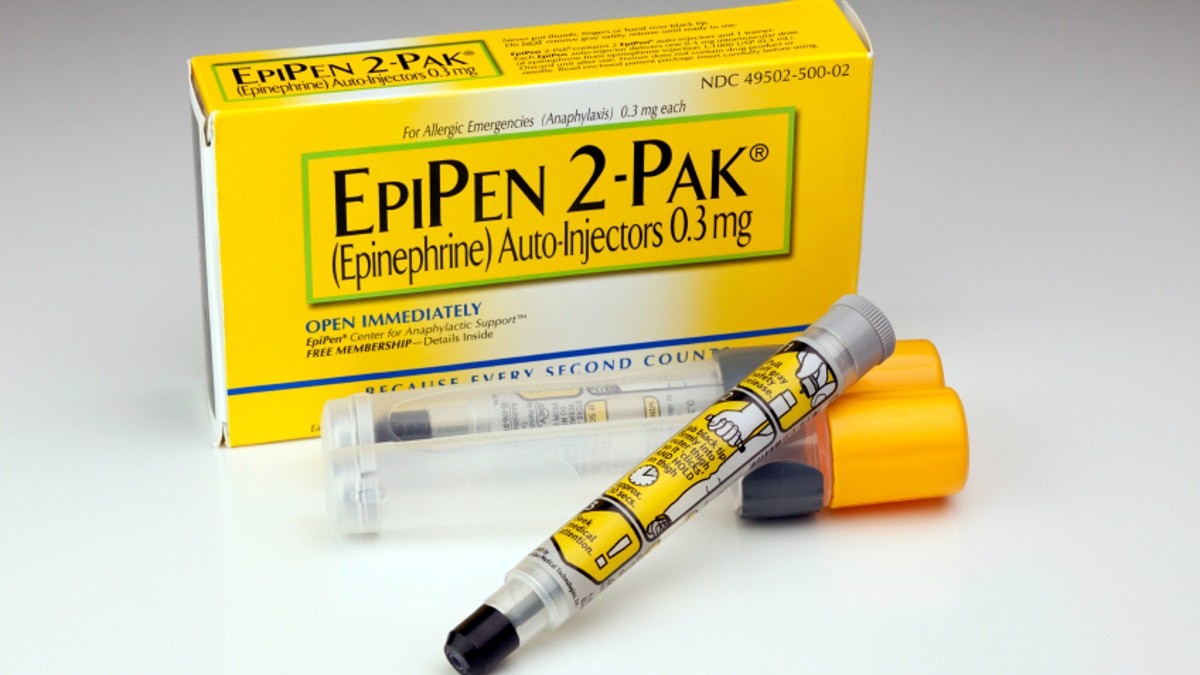
A mistake I made as an intern more than 20 years ago still haunts me. It’s one that doctors continue to make today, even though a simple solution — affordable EpiPens for emergency departments — could make these errors a thing of the past.
One night during my first year as a full-fledged physician, I took a call in the middle of the night. A young man being treated for cancer was having a severe allergic reaction to a blood transfusion. The nurse and I grabbed a vial of epinephrine from the crash cart.
For someone having a potentially deadly anaphylactic reaction, a small dose of epinephrine (0.3 milligrams) can help reverse the rash, wheezing, swelling of the throat, and other symptoms. It should be injected into the muscle or under the skin so it doesn’t get into the bloodstream too fast, which can dangerously stress the heart. By comparison, a larger dose (1 milligram) is injected into the bloodstream to try to restart the heart when the heart stops during a “code blue.”
In the stress of the moment, I failed to see that the vial was an extra concentrated form of epinephrine, delivering 1 milligram per milliliter of fluid. It’s like concentrated laundry detergent, sold to save on volume — and money. One vial of this type of epinephrine costs just $4. The drug is also packaged in a more dilute form, which delivers just one-tenth of a milligram per milliliter of fluid. It is up to doctors and nurses to double check the vial to make sure they know how much of the drug they are actually giving.
Read more: EpiPen pricing controversy reflects larger issues in pharma industry
In the stress of the moment — the patient had dangerously low blood pressure — we injected the whole vial into his intravenous line, meaning it went directly into his bloodstream. (To be fair, intravenous dosing for severe anaphylaxis was recommended then; the guidelines have since been changed for safety reasons.)
At first, the patient seemed to be making a great recovery: His blood pressure came up, he regained his level of alertness, and color returned to his face. But then he clutched his chest and said he couldn’t breathe. His blood pressure skyrocketed to 180 and his heart was beating 200 times a minute. I immediately realized that I had given him three times too much epinephrine. There was little we could do but watch, wait, and reassure him. Thankfully, he recovered fully.
In the many times I treated anaphylaxis after that, I was hypervigilant about the dose of epinephrine and always visually confirmed the dilution before it was given.
Many health care professionals have made the same mistake that I did.
In 2006, the Pennsylvania Patient Safety Advisory published a white paper titled “Let’s Stop this ‘Epi’demic!” In it, the committee identified overdoses due to miscalculated epinephrine doses as a major driver of medical error and some deaths. Other researchers have speculated that confusion over epinephrine dosing in anaphylaxis has led to underuse of the drug by emergency room personnel when treating severe allergic reactions.
The Pennsylvania group recommended creating prefilled syringes with the specific dose for anaphylaxis and clearly labeling them on the emergency crash cart. This is exactly what Mylan Pharmaceuticals’s EpiPens provide. They are an excellent consumer product because they are essentially foolproof. That’s also what makes EpiPens a great product for emergency personnel to use: no need to squint at a bottle label for its strength or to make calculations when someone is dying in front of you.
Read more: Anger at EpiPen prices channeled at Mylan CEO in congressional hearing
Mylan’s dramatic price increase for EpiPens has not only made it difficult for consumers with severe allergies to afford them, but it has most certainly prevented some health care systems from buying them. Moreover, the formulation of EpiPens requires that they be replaced every few months due to heat instability, further reducing their affordability on a large scale. My colleagues who work in emergency departments tell me that many still stock epinephrine in vials of different concentrations that doctors and nurses have to dilute in a moment of crisis.
And clinicians are still making epinephrine-related errors. It recently happened to a parent from my child’s elementary school. After I mentioned that I hadn’t seen him for a while, he confided that he’d been fighting testicular cancer. “They are going to cure me of this cancer, but they almost killed me first,” he told me. I asked what he meant. “I had an allergic reaction to the chemotherapy in the outpatient infusion center. The nurse gave me the wrong dose of epinephrine, which caused me to have a heart attack.” He told me that it was the most frightening experience of his life; he thought he was going to die right there. His heart attack was not trivial, either; his doctors could not rule out the possibility that his heart had sustained irreversible damage.
In an era where up to 400,000 people are harmed in the medical system every year, it is unconscionable that we have not taken the simple step of making EpiPens, or another metered dose injection device like it, standard equipment for emergency department crash carts. Now that Mylan has raised the cost of a two-pack of EpiPens to $600, it is almost certain that hospitals and health systems will continue to opt for the more affordable alternative of epinephrine in $4 vials. Unfortunately, that means they may be paying for the difference with patient’s lives.
Jennifer Brokaw, MD, was an emergency physician for 15 years. She is the founder of C2it, a California-based company that helps patients and families get safer, more-value oriented health care.
